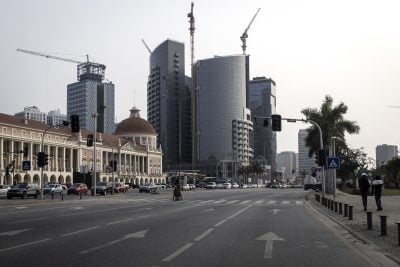Compiled on the basis of interviews with global industry leaders, Ernst & Young’s Business Risks Facing Mining and Metals 2011–12 is the latest in a series of publications over the last few years which assesses the key risks facing the sector. One of the report’s authors, South Africa-based Adrian Macartney spoke to African Business’s MJ Morgan about the report and its implications for the continent.
From both an operational and strategic point of view, mining is a risky business. Mines are capital intensive, energy intensive, require significant infrastructure in order to move ore to market and operate over long periods of time. As a result, they are especially vulnerable to changes in the political landscape, fluctuations in the price of the commodity mined as well as the costs of labour, transport and energy.
But what issues in particular are currently most troubling to senior mining executives?
Top of the list this year is resource nationalism, up from fourth place in 2010. It is not surprising, given the impact of the global financial crisis, that cash-strapped governments seek to leverage elevated commodity prices in order to refill the national coffers.
Proposals for a windfall tax in Tanzania, the moratorium on the granting of mining rights in South Africa from late 2010 until April this year (to allow for all licences granted since 2004 to be audited) and Ghana’s plan to double mining royalties are all reasons for this increased anxiety amongst mining executives.
Nationalisation is also a concern for the sector and not just in South Africa, whether it be the risk of full-scale nationalisation or simply a mandated increase in the participation of the state, indigenous groups or other stakeholders – as is being considered or implemented in Guinea, South Africa and Zimbabwe. According to Adrian Macartney, this issue can combine with risk two – skills shortage – in a combustive manner.
“In South Africa you’re looking at a large number of unemployed people, particularly youth unemployed, who have not necessarily seen the benefits of the political change coming through in South Africa.
“How do you manage the risk around resource nationalism? How do you, as a mining company, become quite attractive to a host country?” asks Macartney.
“Well, you do so by demonstrating the benefits of having your mining operation in that particular country and one of those benefits might be employment creation or skills development.”
So it seems the key to negotiating these challenges is good management with a focus on providing value not just to that paramount group – shareholders – but also to employees, local communities and governments.
The problem of infrastructure access has risen three places, from sixth to third. The ability to manage the supply chain so as to ensure that production can physically meet demand in an efficient manner is key to the sector’s growth.
Innovative projects singled out for praise include the Nigerian government’s establishment of the Sustainable Development Fund to assist in the development of the mining sector as well as ArcelorMittal and Rio Tinto’s railway building programmes to carry their iron ore to port in Liberia and Guinea respectively. Greater cooperation between companies and governments is key to improving vital infrastructure such as rail links, to overcome current and near term bottlenecks.
There are significant risks for mining companies internally as well as externally. This year capital projection execution made its top 10 debut, at number five. Examples of significant project overspends, such as at the Ambatovy nickel project in Madagascar, where costs rose from $3.3bn to $4.5bn, illustrate the importance of tight management and execution.
“The issue is classical project management; projects taking longer than anticipated and costing more than anticipated. Being able to execute a project on time and on budget certainly gives a greater confidence to investors and that is really where it’s at because as there is also a limitation, obviously of capital in any particular company, to get things done,” says Macartney. Interestingly, given the ongoing uncertainty in the banking sector, access to capital fell from eighth place last year to 12th place this year.
On whether lenders are returning to the sector, Macartney observes: “Following the trend over perhaps two to three years, what has happened is that companies that are delivering on good projects are still able to raise money for projects. We have seen deals done, where the fundamentals of the project speak for themselves, so they are actually able to raise that money.”
This view is certainly borne out by the figures. According to PricewaterhouseCoopers’ Mine 2011 report, the world’s top 40 miners have halved their debt, built cash reserves of $105bn, assets values reached $1 trillion, revenues surpassed $400bn and profits topped $110bn.
Tempting targets
With gearing amongst the 40 down to an average of 8%, some $300bn worth of capital programmes have been announced, including $120bn for this year, a doubling compared to 2010. In fact it may just be this success that is attracting government attention. Because mines are immobile, require enormous amounts of capital to commission and operate for many years, they are particularly vulnerable to the vicissitudes of cash-strapped governments.
Macartney says,“I don’t have a problem with governments in principle making sure they get the best deal for the citizens of their country. I think that this is what plays out on resource nationalism – governments are trying to get the best deal, benefiting from the demand for the commodities from their particular country. But you need to balance these concerns with the need for a mining company to make a decision that is going to impact over the next five to 20 years.”
The uncertainty caused by changes in policy by government can adversely affect planning and thus the growth of the mining sector, with a knock on effect on future development: “In Tanzania where they are looking at renegotiating royalty rates it becomes very, very difficult for mining companies to make investment decisions when, frankly, the goal posts move.”
Clearly both parties can most readily profit by working in tandem. Hence the report stresses the utility of mechanisms such as profit-based taxes, rather than revenue based taxes so that both companies and governments share in the success of ventures. But this is not the entire picture.
Mutual benefit the key
“There are series of other factors, not just taxes to consider. Obviously there are issues around political stability, around labour forces, the ability to hire and fire labour, the ability to readily access capital in the country, the environmental legislation, the water legislation. I think for the mining sectors there are a number of factors which government has the ability to influence, certainly around the setting of best practice for policy.”
The evolution of the mining environment is neatly demonstrated as the risks year on year are compared. Whilst problems such as climate change and access to energy edge out of the top 10, price and currency volatility, and infrastructure access advance three places. Energy concerns now are more related to interruptions, to security of supply, rather than access. Capital concerns have ameliorated. Whilst access to capital is less of an issue, the question of capital allocation, whilst still a serious concern at seven, is not the number-one concern it was 12 months ago.
The report indicates the recovery of the sector from the global financial crisis, as a more healthy sector now seeks to address itself to building an appropriate social and economic compact with host states. Honesty and straightforwardness are key, especially in a year in which fraud and corruption make their debut in the top 10.
As Macartney puts it, “The biggest issue is that what you really want, between the government and the mining sector, is a level of transparency so that both parties really know what they’re in for over a sustained period of time.”
Want to continue reading? Subscribe today.
You've read all your free articles for this month! Subscribe now to enjoy full access to our content.
Digital Monthly
£8.00 / month
Receive full unlimited access to our articles, opinions, podcasts and more.
Digital Yearly
£70.00 / year
Our best value offer - save £26 and gain access to all of our digital content for an entire year!

 Sign in with Google
Sign in with Google 




